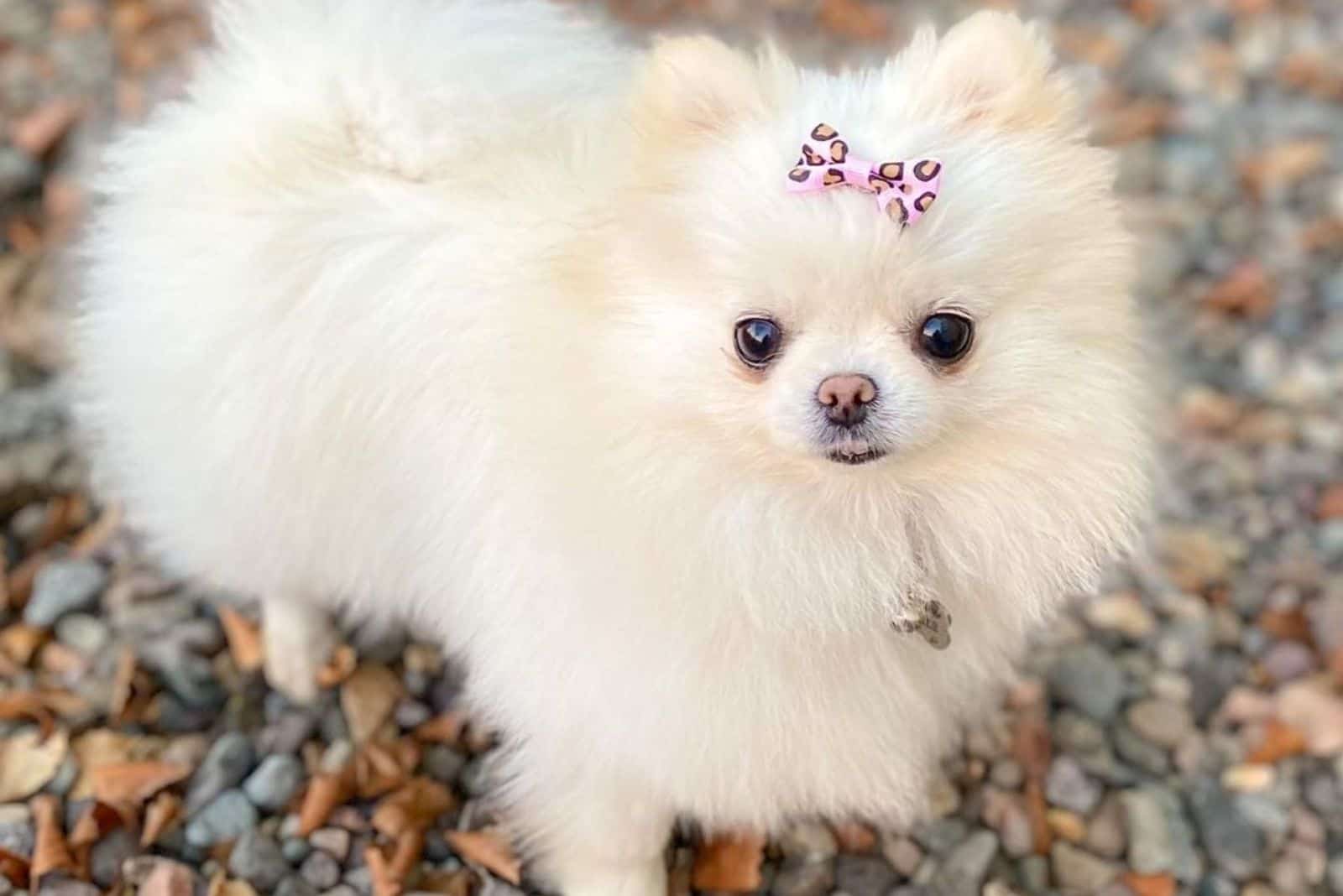Why?Even though you might think teacup Pomeranians come from Pomerania, an area in northern Poland and German, this isn’t true. Pomeranians are originally from the Arctic region, where they were bred as working dogs or sled dogs.
They’re called Pomeranians because this area was the first to raise standard size Poms as household pets. Their ancestors? The Spitz or Wolfspitz dogs.
Since the breed was discovered in the 18th century, it has been popular among royalty. For example, Queen Victoria owned a small Pomeranian that she loved to death.
The Pomeranian has several names, including Pocket Pomeranian, Miniature Pomeranian, Teddy Bear Pomeranian, Mini Pomeranian, and Toy Pomeranian. Other alternative names are Pom, Loulou, Dwarf Spitz, and Zwergspitz.
No matter which of these names you use, the dog is not a distinct breed. Most of these names refer to a little dog, teacup Pomeranian, weighing only 1,36 to 1,81 kilos.
Teacup Pomeranian Size
Teacup Poms are small dogs with short and compact bodies. An average teacup Pom weighs between 3 lbs to 7 lbs. The American Kennel Club (AKC) describes a teacup as a Pomeranian that weighs 7 lbs or less.
Because of their small size, weight, better adaptability, and flexibility, this breed is an ideal choice for dog owners who live in apartments.
Personality: What Are Teacup Pomeranians Really Like?
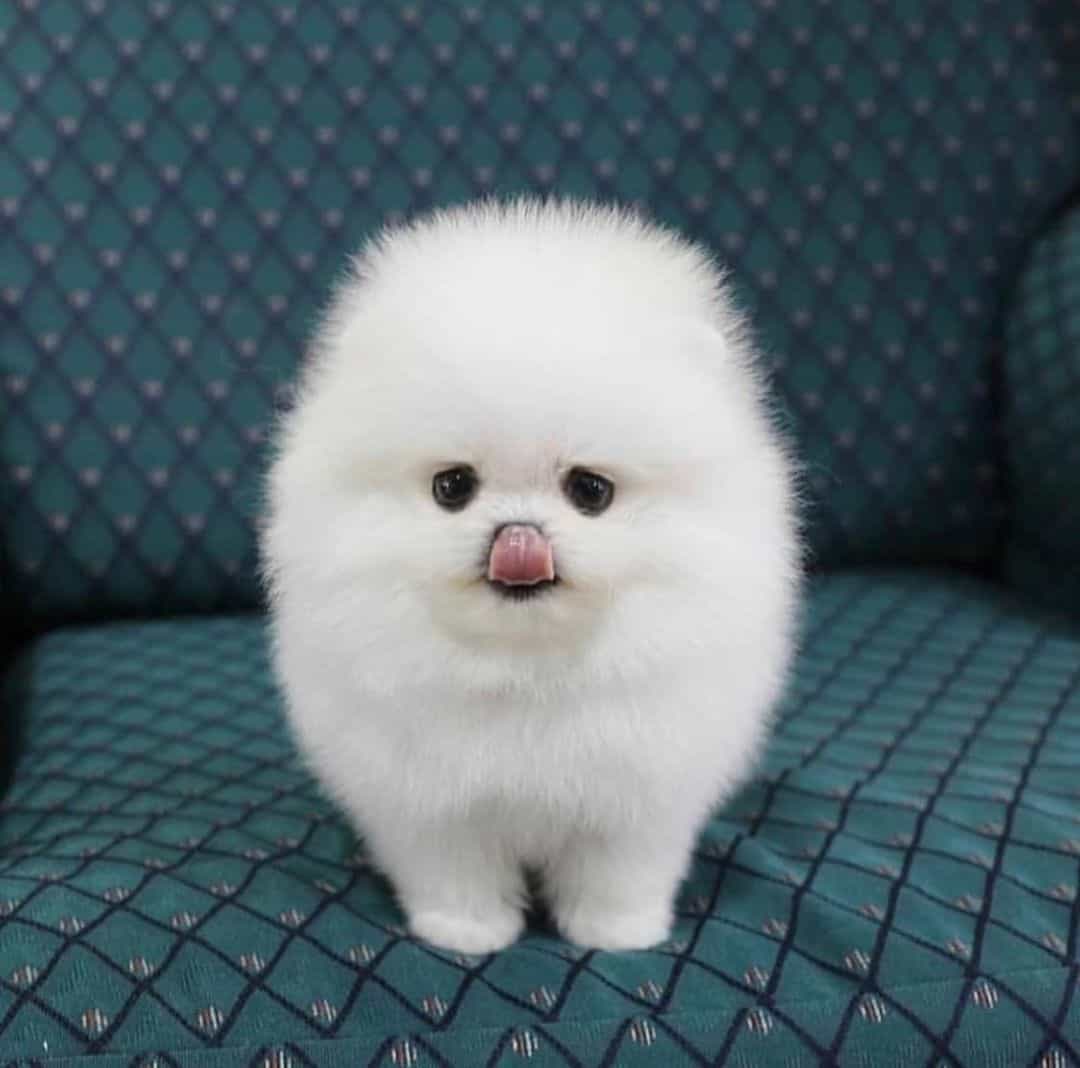
Photo from: @pomeranian.doggo
If we had to find three words to describe teacup Poms, those words would be active, playful, and friendly. Even though they have tiny bodies, they’re highly active pups packed with energy. Still, they like cuddling on the sofa next to their owners, which also shows how loyal Poms are.
Poms do love their humans, but they’re not so fond of kids. They will either bark or display behavioral issues when left alone with children. A sassy Pomeranian might not be the best choice for a family dog.
Being so loyal to their owners only means Poms are generally quite jealous and territorial dogs. It’s highly important to socialize them with other humans and similar canines. When interacting with other, larger dogs, the owner must always pay attention to the Pom because these guys simply don’t understand how small they are.
Poms will think they’re equal to a large dog like the Bulldog, Poodle, or even a German Shepherd. Yup, their ego is huge, and they’re not clear on their picture of themselves. They can easily pick a fight with these large dogs or even other toy dogs like a Yorkie or Chihuahua. Such a small dog, such a big and feisty temper.
Since they have a natural tendency to bark, Poms make excellent guard dogs. If you properly train your Pom, you will get a smart and alert canine who’s capable of keeping watch as well as snuggling next to you on the couch.
Teacup Pomeranian Appearance
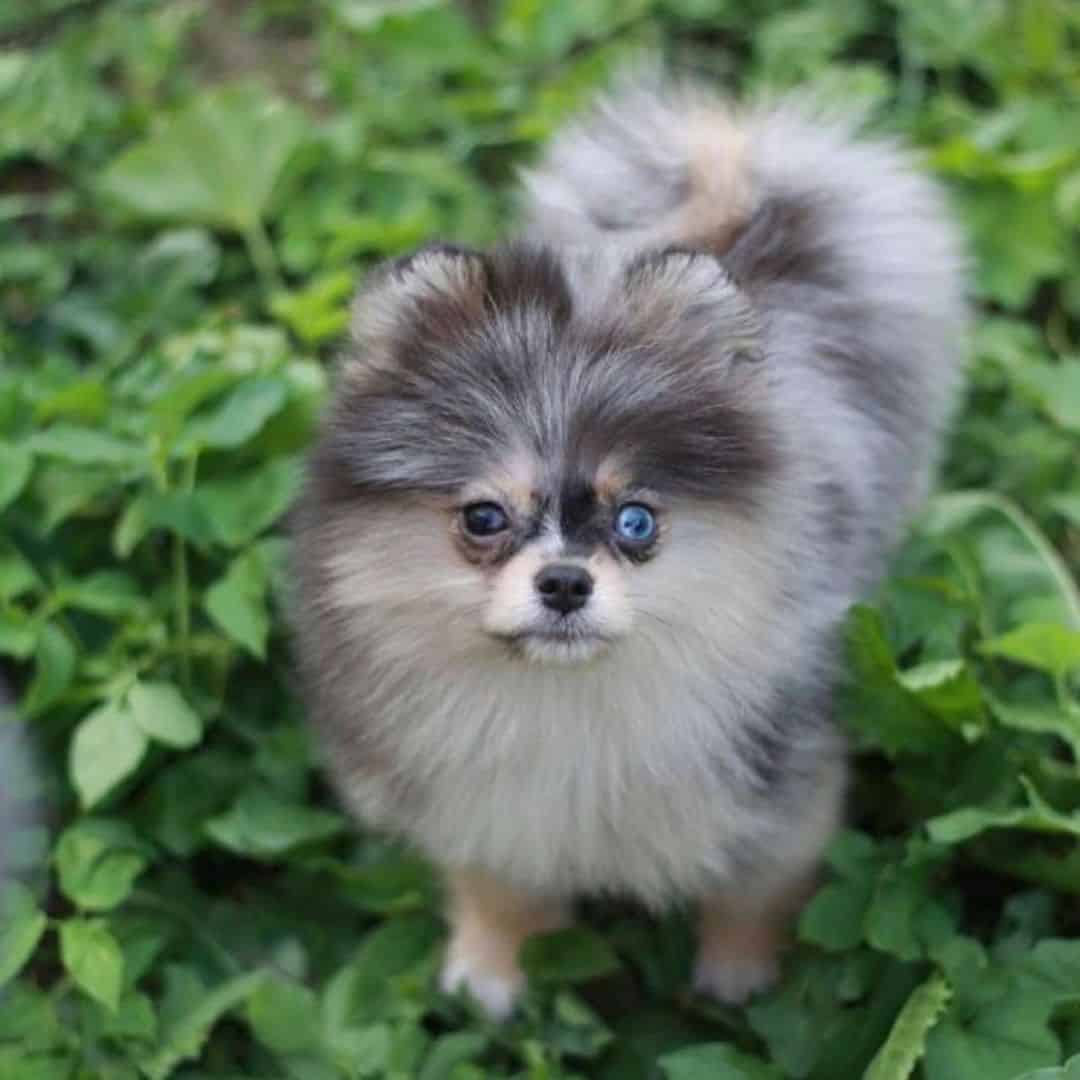
Photo from: @pomeranianminipups
Teacup Pomeranians have pointy ears and big, round eyes. Their tail elongates on the backside, and it’s soft and fluffy. These are common characteristics to all Poms, but the head shape is the one thing that distinguishes one Pom from another.
The three head shapes Poms usually carry are the fox head type (fox and German Spitz), baby doll face, and teddy bear face.
When it comes to their fur, Poms have a thick and abundant layered coat with a creamy texture and an undercoat.
Fun fact, when the breed was first discovered in the Arctic, they had a large body of approximately 20 pounds and a solid white, thick, and heavy coat.
Today’s Poms are quite different, as you can see. They come in several different colors, including:
• Sable (solid coat color with black-tipped hairs)
• Beaver (chocolate color with some pigments)
Red (red-orange or dusty red)
• Lavender (light grey shade with a mixture of purple)
• Orange (orange coat with black stripes)
• Merle (a speckled coat as a result of red, grey, or light blue patches or dots)
• Cream (born pure white, which changes shades in time)
• Brindle (more a pattern than a color)
Other colors include pure white, black, and chocolate.
Teacup Pomeranian Colors
Teacup Pomeranians have fascinating coat colors. In other words, the possibilities for their coat colors are endless.
Many dog lovers don’t really know how to distinguish these colors, so they name them all orange. To make things easier for them and new teacup Pom owners, here’s a detailed explanation of the coat colors.
Red Teacup Pomeranian

Photo from: @the_pomsketeers (IG)
The red-orange Pom puppy is rare. If you do find one, consider yourself lucky. Sometimes people call them rust-colored Poms. It’s usually a rare type, and if you happen to come across one, you are lucky.
Sometimes it is defined as a rust color, and it is usually the darkest and deepest orange shade.
Usually, this color is confused with red because dark orange is so rare.
White Teacup Pomeranian
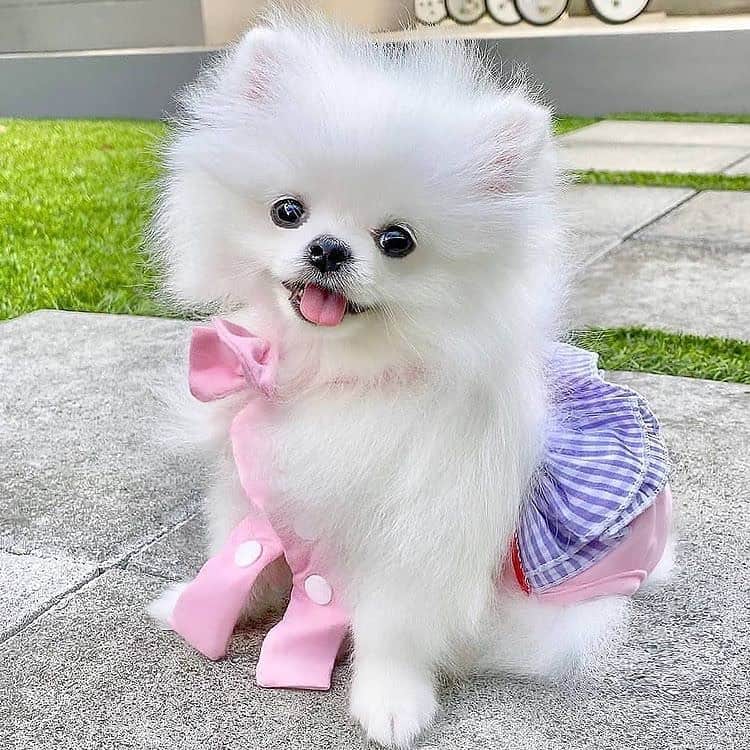
Photo from: @dyadyuginakladina
A pure white Pom is a snow-white Pom without any other marks and shades on the coat.
If there is a single mark on the white coat, such a Pom will be classified as cream.
Some Poms may be born white, but they can develop a second color as they age. Therefore, they will be classified as other colors.
Sable Color
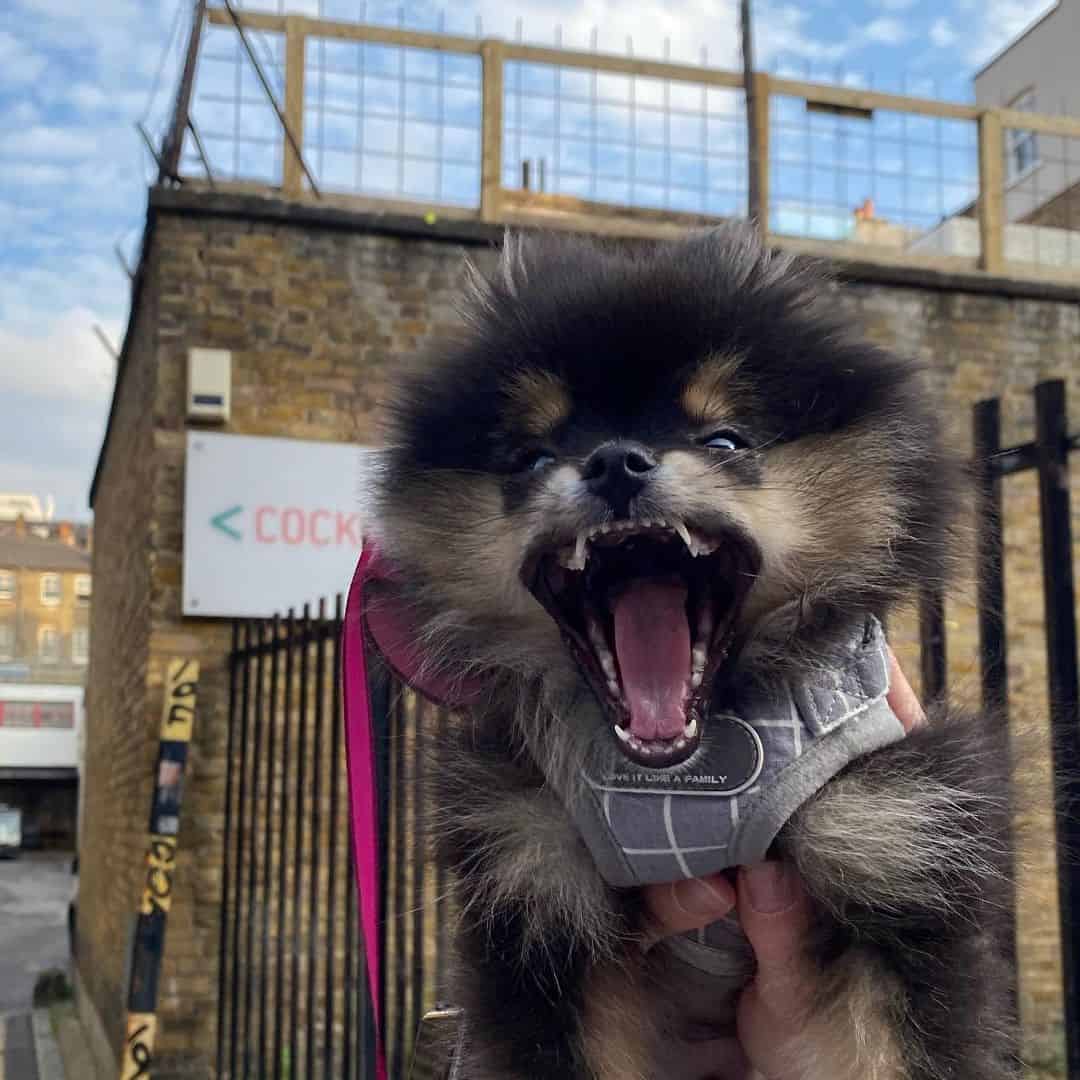
Photo from: @apollo.of.olympus
Sable Poms have a bright solid base where the sable color reveals itself through the guard hairs, which usually have dark tips.
Several types of sable Poms have chocolate coats with a brown overcoat where guard hairs are black and cream sable with a light base overcoat where the guard hairs are also black.
Cream Teacup Pomeranian
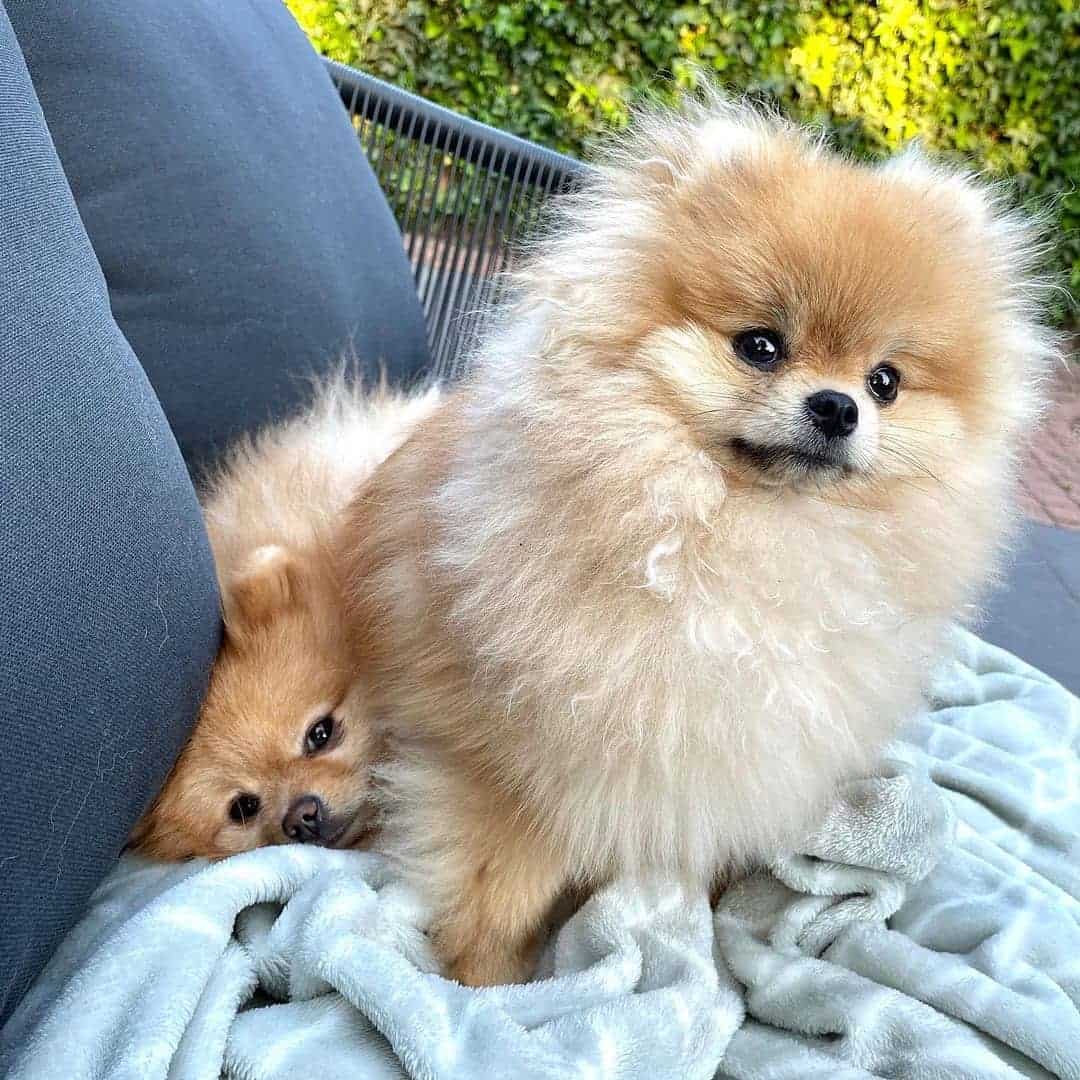
Photo from: @pomeranianklub
A cream Pomeranian can vary from very light to almost white. The shade gradients help to make the variation where it goes down to light brown.
When the color reaches light brown, one might confuse that Pom with a chocolate one. However, deep cream Poms have black pigmentation, while chocolate ones have brown points at the nose, paw pads, eye rims, and lips.
Black Teacup Pomeranian

Photo from: bijou_teacuppom
Pure black Pomeranians have deep solid black eye rims, lips, paws, and noses without any secondary color. If other colors appear, that dog will be classified as a parti Pomeranian.
Some Poms may have white marks, but a pure black Pom has only black hairs.
Chocolate Teacup Pomeranian
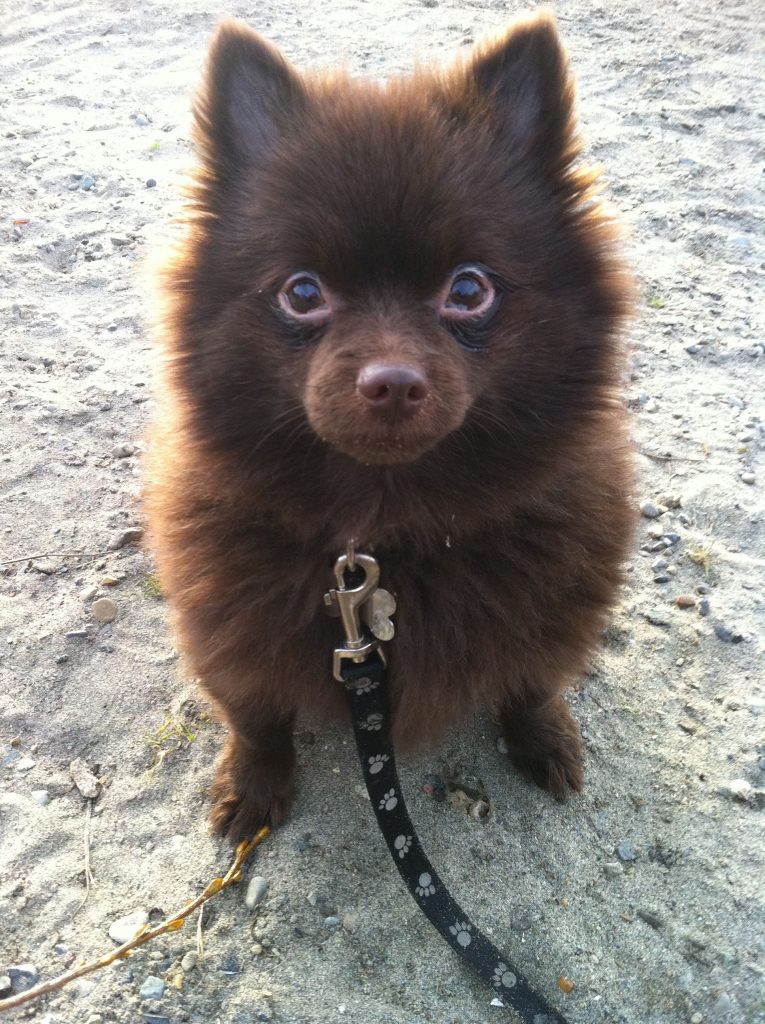
Photo from: @Brittany R
Many chocolate Poms are usually a deep dark color. However, some chocolate Poms will appear light, almost cream, but they still will be considered chocolate as long as the skin has dark brown pigmentation.
Teacup Pomeranian Life Span
The teacup Pomeranian dog usually lives between 7 to 12 years, but the average lifespan can extend up to 15 years.
Because of their small size and weight, Poms can live a longer lifespan compared to other dog breeds.
As long as your Pom has proper nutrition, enough exercise, and plenty of love from you, it can live a long and happy life.
Taking Care Of The Pomeranian And Their Safety
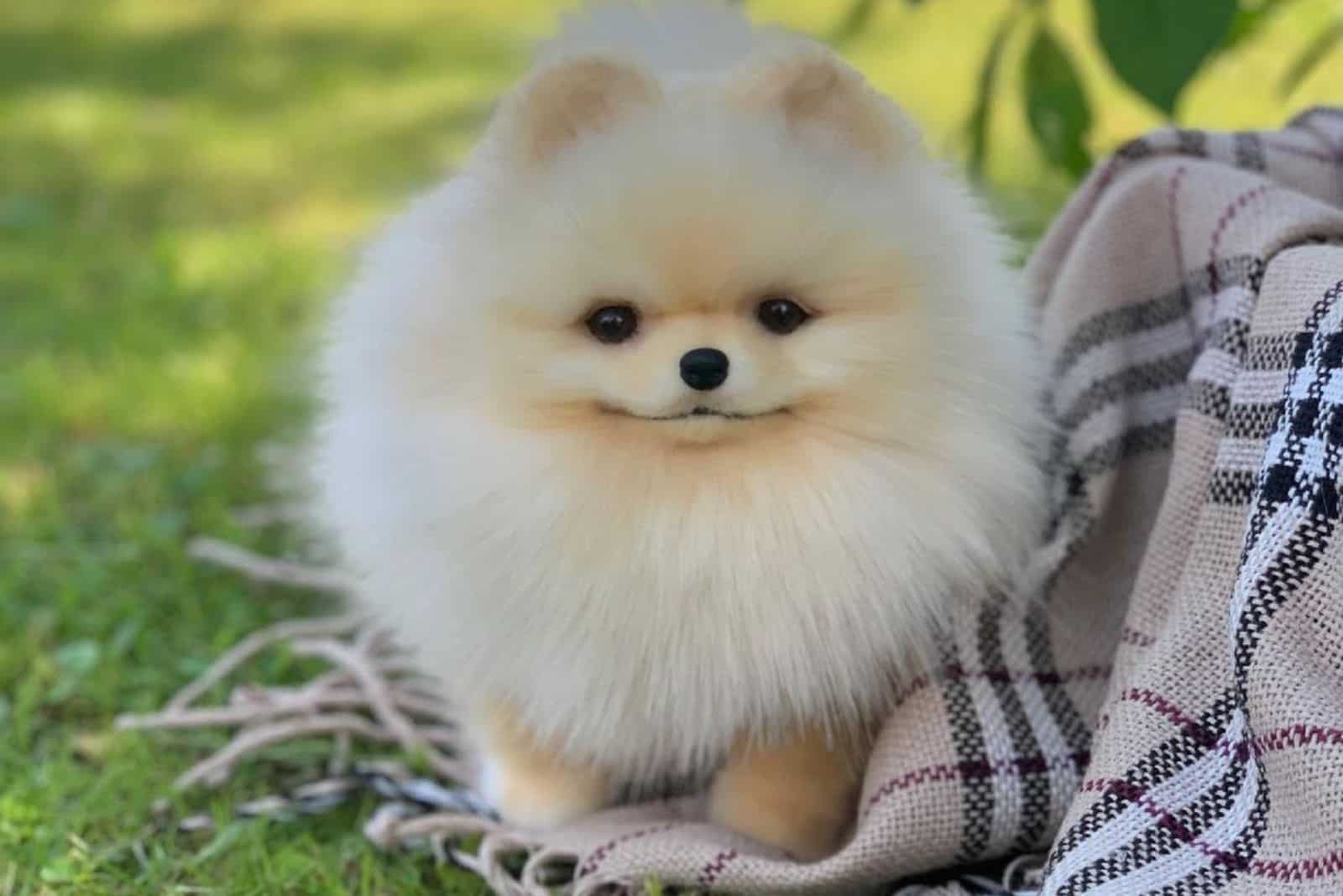
Being so small makes teacup Poms so fragile and delicate. Teacup Pomeranian puppies are even more fragile! There’s always a huge chance of your puppy being accidentally stepped or sat on.
Also, your Pom can easily be injured if it jumps off high objects or surfaces, i.e., sofas or counters.
What you need to take care of, if you’re a first-time Pom owner, is to keep your voice low and your movements controlled. They don’t like sudden movements.
Separation Anxiety And Stress
The teacup Pomeranian isn’t the best choice for people who spend more than 5 hours a day away from home. They’re social dogs that sometimes experience separation anxiety if they’re left alone for too long. Separation anxiety isn’t something to be played with since it can cause tremendous stress to dogs.
Those negative feelings may cause your Pom to chew on furniture, scratch the walls, and make a mess around the house.
In other words, Poms demand your attention all the time. Luckily, taking your Pom to work is a thing now, as well as going shopping with them or sipping coffee out with friends.
In case you really need to leave your Pom home alone, make sure they’ve got plenty of food and water as well as some fun toys to keep them busy until you come back.
Teacup Pomeranian Health Issues
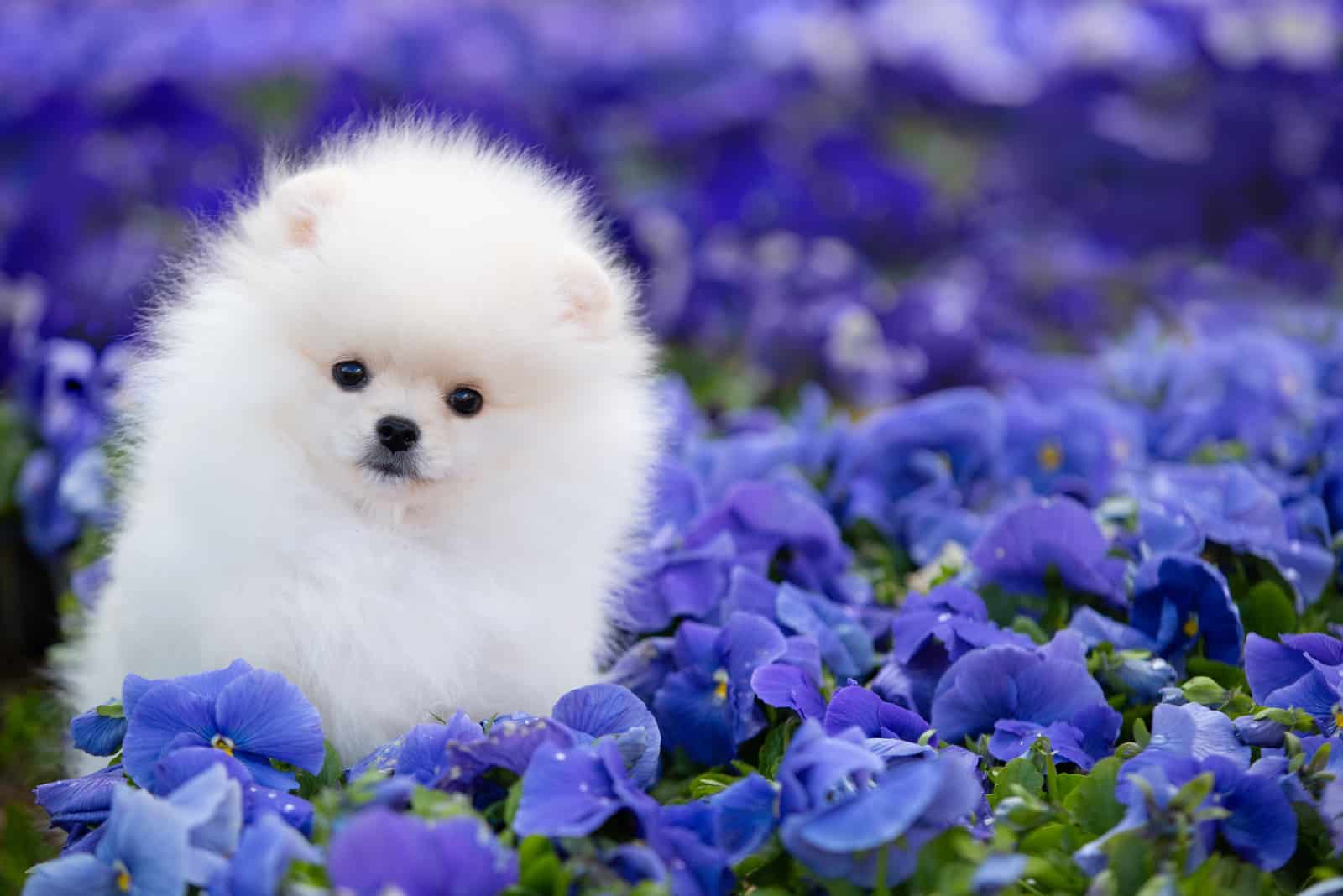
All dogs have some major health problems, but teacup versions are prone to even more issues. It all has to do with their teacup size and the way they were bred. In case you didn’t know, the teacup is considered faulty, and major kennel clubs don’t recognize this size.
Well, for starters, it’s unethical to breed runts of the litter and pups with disabilities only to gain a certain size, color, or look. Teacups are born when two tiny dogs or runts of the litter are paired together.
However, this doesn’t stop people from breeding teacup Poms or liking them so much they want to adopt one.
Here’s a list of the teacup Pom’s most common health problems you should know about:
• Cryptorchidism: a health problem that affects only the males of the Pomeranian breed. It’s an issue where one or both testicles fail to descend into the scrotum.
• Luxating patella: a condition when the patellar groove is too shallow or not adequately secured. The major symptom of this condition is limping.
• Black skin disease: another condition that affects only male Poms, and it’s accompanied by hair loss. This illness usually strikes in the puberty stage.
• Tracheal collapse: a condition characterized by the weakening of the dog’s tracheal rings in the windpipe. The walls around the throat also become weak, leading to the collapse of the throat.
• Other health concerns may include mild or severe deafness, colobomas, microphthalmia, ametropia, increased intraocular pressure, and cardiac, skeletal, and reproductive abnormalities.
Mini Pomeranians Death Causes
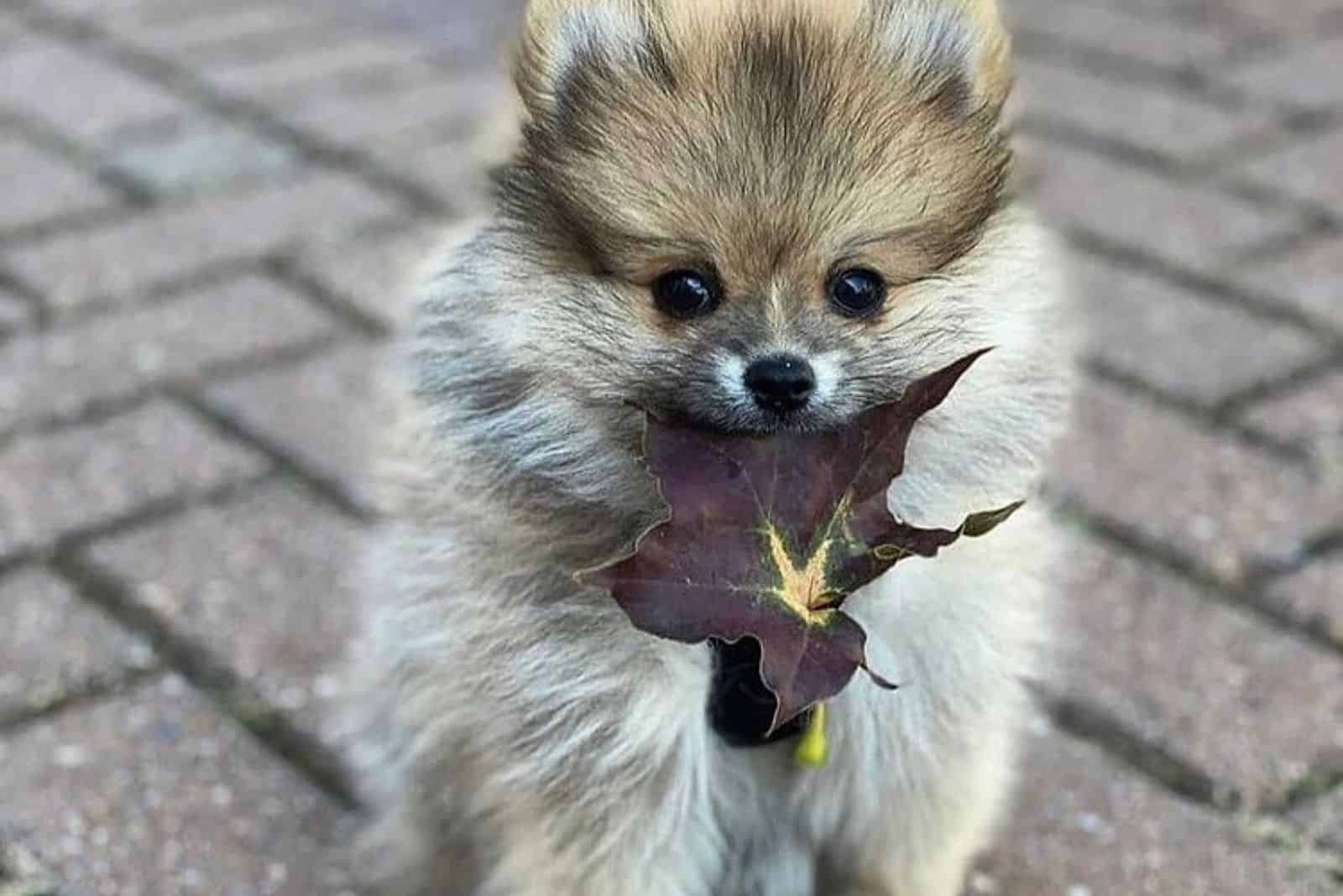
Some of the above-listed medical conditions may lead to the death of teacup Poms. Other things that can also lead to fatalities are trauma, viral infections, and gastrointestinal problems.
Common injuries like jumping out of your arms or off the sofa may seem harmless, but they can also lead to death.
Prevention is the only thing keeping your Pom safe from trauma fatalities.
Teacup Pomeranian Puppies For Sale: How Much Does a Pomeranian Cost?
Poms can have a low price at only $500. But, their prices can skyrocket. Some Pomeranians can cost up to $4,000!
The price of your teacup Pom depends on where you buy the puppy.
There are important factors that affect whether the price will be lower or higher.
For example, a half or mixed-breed will always be cheaper compared to a purebred Pomeranian.
The dog’s coat color can also affect the price greatly.
When buying a teacup Pomeranian puppy, you need to be careful not to buy from a breeder who wants to trick you. Many unreliable breeders will gladly sell you a mixed-breed Pom but claim it’s a purebred one. Only buying from a respected and reputable breeder will save you from this problem.
Are Teacup Pomeranians Hypoallergenic?
Unfortunately, teacup Pomeranians are not hypoallergenic dogs.
Luckily, they’re still okay with people prone to allergies because they’re among the most tolerable dogs.
A micro teacup Pomeranian will produce dander and shed. It does have a double coat, after all. Still, they don’t shed extensively. People with mild allergies will be able to tolerate their company.
The Pom’s Exercise And Living Requirements
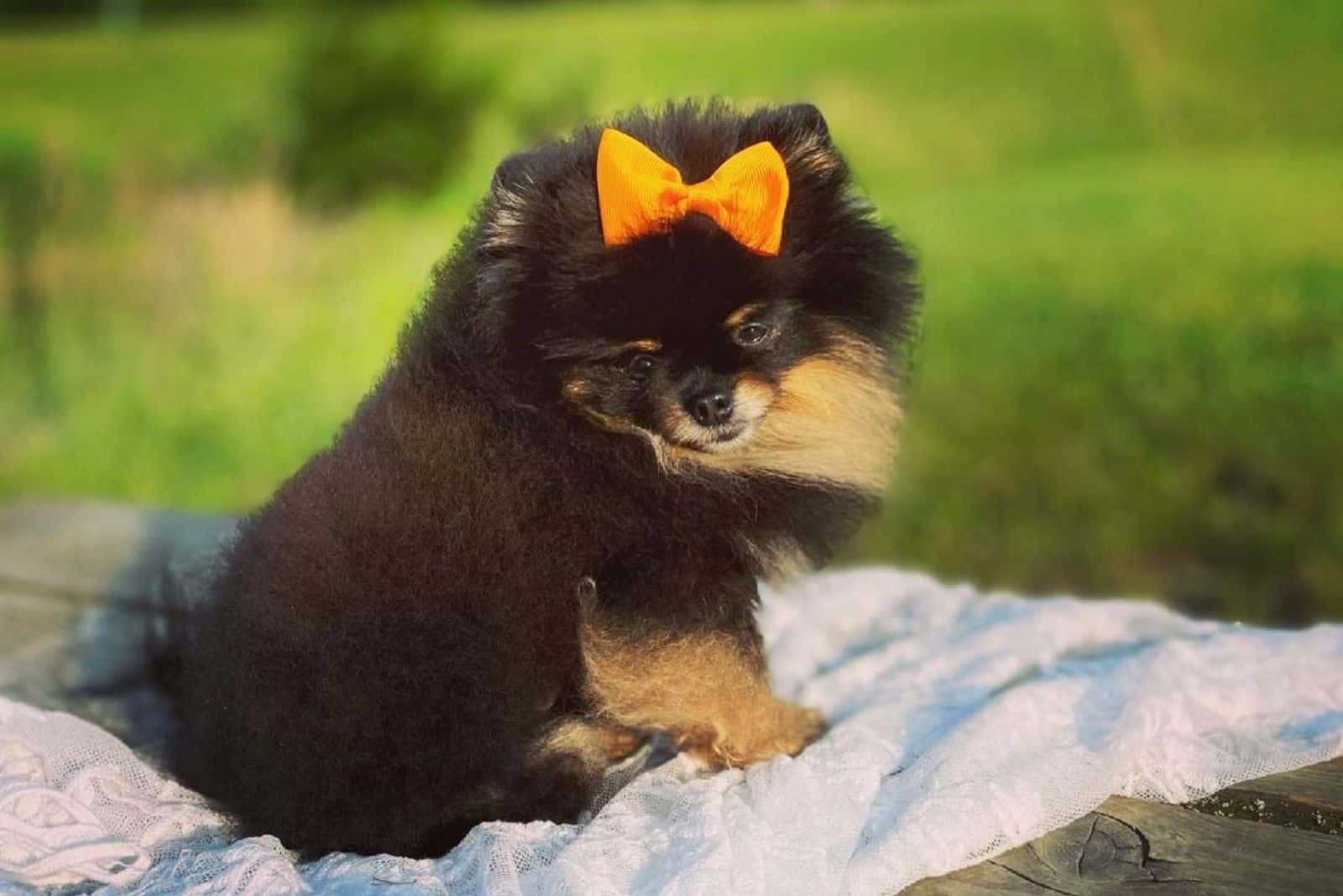
Teacup Pomeranians require outdoor exercise daily. Luckily, they do not need extensive exercise and seem to adapt well to all living conditions, even small apartments.
If you’re living in a tiny place without access to a spacious backyard, you can still own a Pomeranian.
Since these dogs have no idea how small they are, they’re highly active animals who seem to get the zoomies all the time. Despite having such a tiny body structure, teacup Poms actually enjoy long walks as long as the temperature isn’t too hot.
Carrying your Pom everywhere is not a good idea. Let them work out and enjoy the exercise.
Keeping your Pom mentally stimulated means a lot to these pups. This can be accomplished through interactive games and toys. Regular training exercises also help them flex their brain cells.
How To Train Smaller Dogs Like The Pom
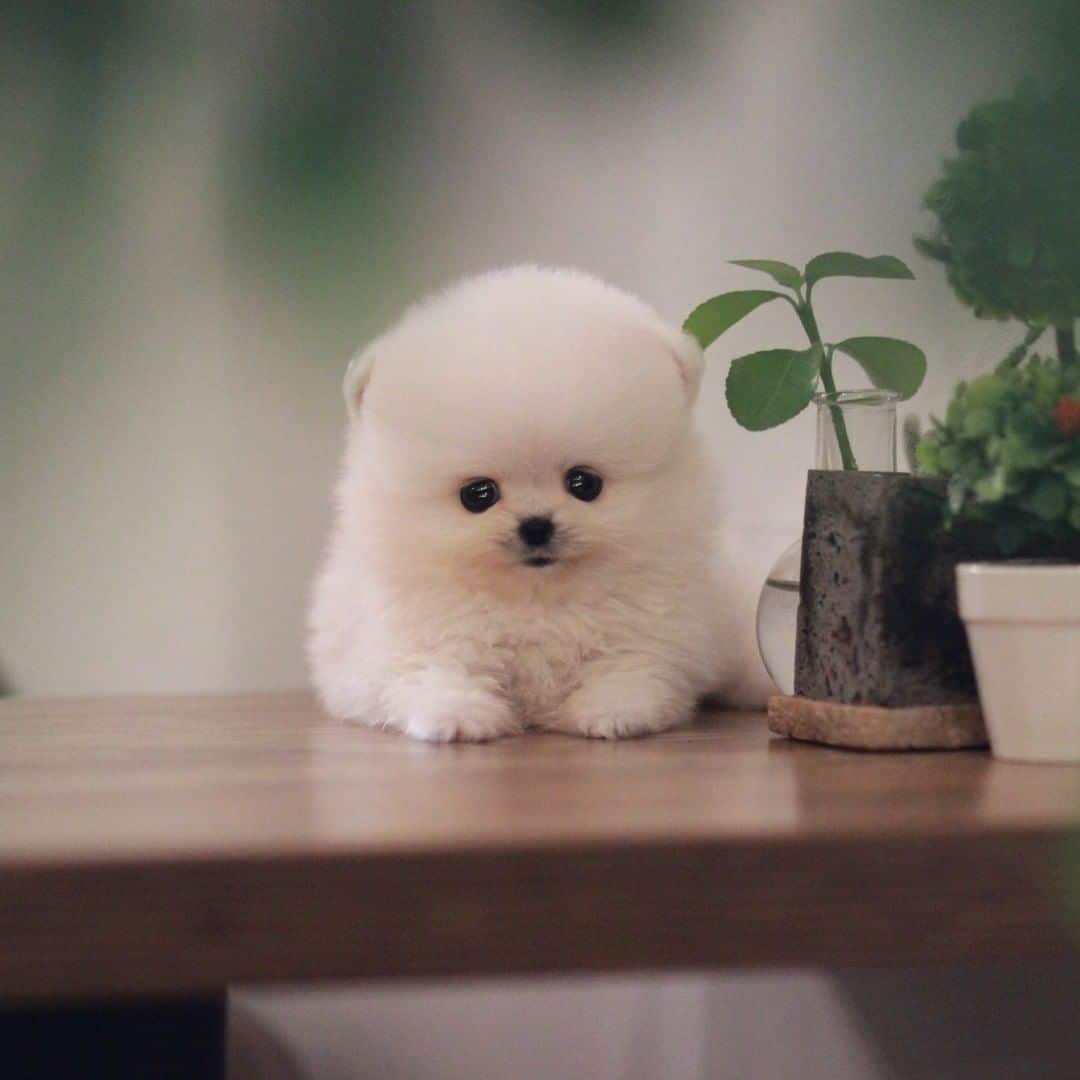
Photo from: @apuppy2021
Teacup Pomeranian training should start very early. These smart dogs need stimulation constantly. But, when you’re not there, make sure they have lots of toys to keep them entertained.
Poms love learning new tricks, and they’re the cutest while doing them.
What’s not so great is that their attention spans are quite short, so keep this in mind when going through training. Lessons should be short and fun.
A sensitive dog breed like this one needs positive reinforcement as the only way of training. If they work hard to gain a treat, they’ll have good training results.
Poms get spoiled easily, and that’s not just a stereotype based on numerous celebrity Poms. You should never spoil a Pom. Instead, let them have a fulfilled and happy life, which will result in a long lifespan.
Small dog syndrome is something you will want to avoid with proper training and a well-formed routine.
Nutrition For This Teacup Breed
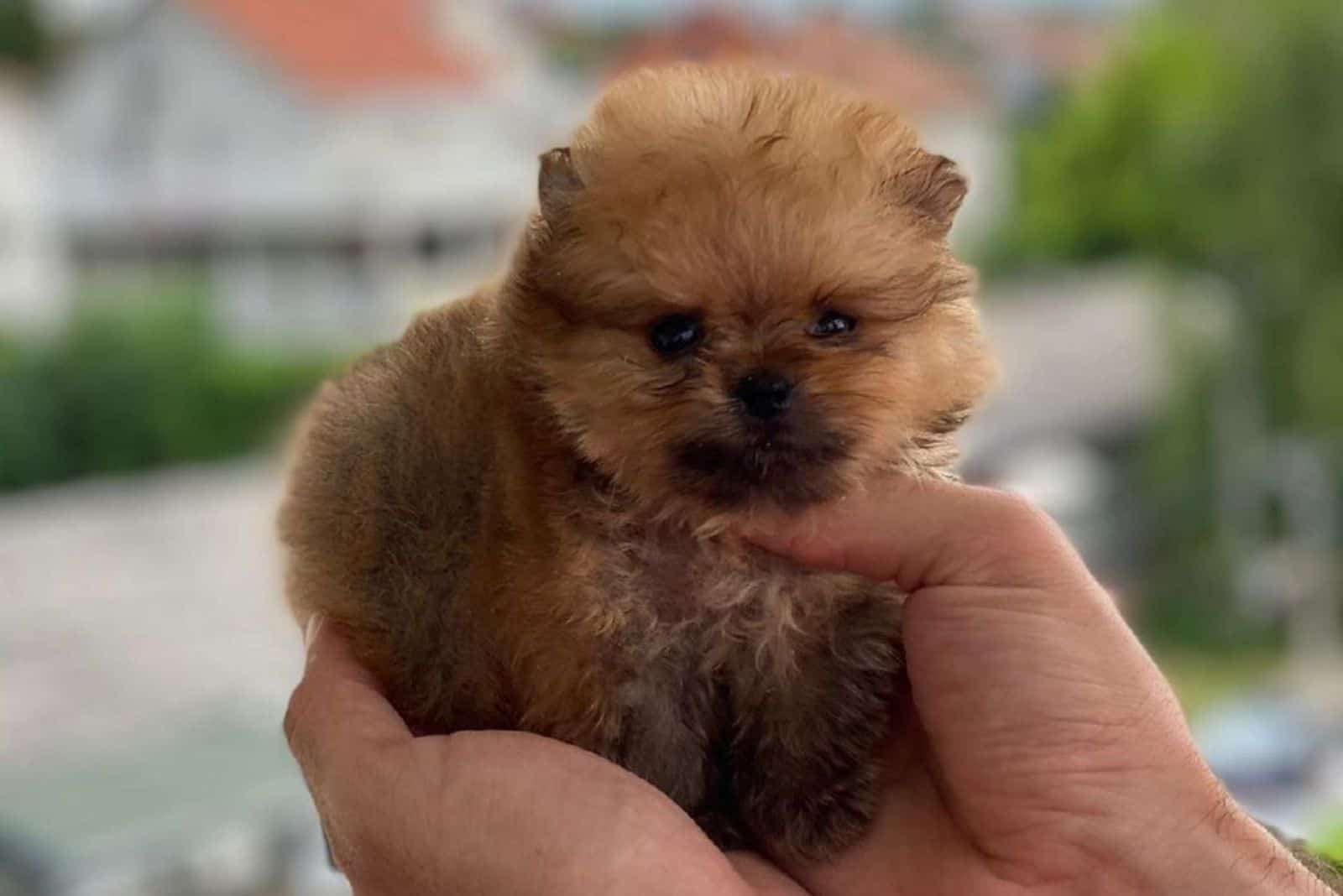
Teacup dogs, including the teacup Pom, require high-quality nutrition and a balanced diet.
A healthy adult teacup Pom will eat between 1/4 and 1/2 cup of quality dog food daily. The serving size may be less, depending on your dog’s size.
Experts say that a Pom should have two small meals a day. The food will be easier on their little stomachs. These meals should ensure your teacup Pom won’t become obese.
Of course, one should always take into account your Pom’s age, size, activity level, and health conditions. Every dog is different, and there’s really not a breed standard when it comes to feeding the Pomeranian breed.
Since Poms have a very fragile bone structure, you should never put extra pressure on their joints, meaning they shouldn’t put on extra pounds.
Dog food should be specific to the Pomeranian; otherwise, the kibble might be too large for the Pom to chew.
Treats should be limited when it comes to Poms. Instead of giving them store-bought treats, try sneaking in a bite of artichokes or some guava or papaya.
Read Also: Pomeranian Feeding Chart: How Much Food Does This Cutie-Pie Need?
How To Groom A Tiny Pomeranian
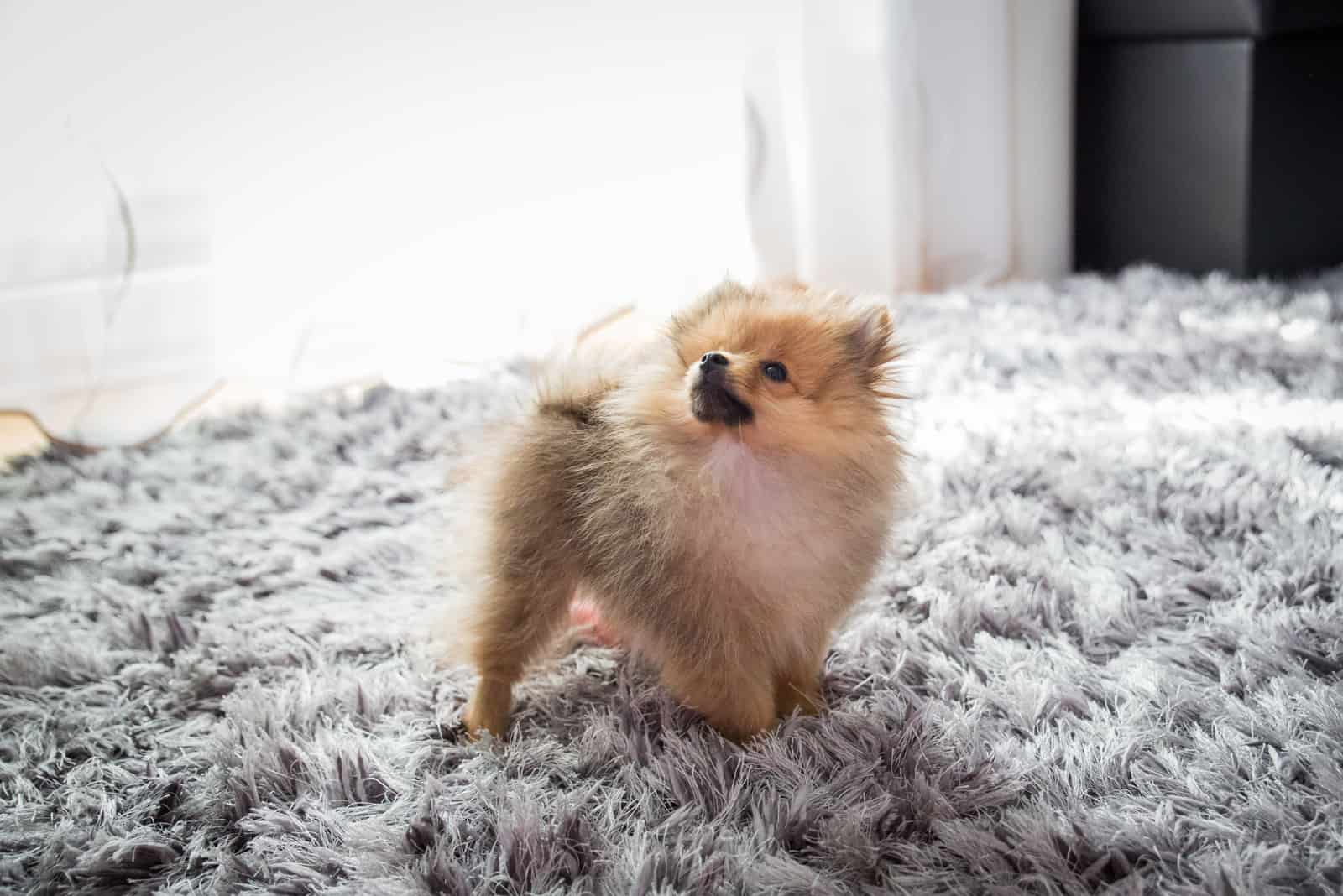
Teacup Poms have that gorgeous double-layered fluffy coat. These dogs need proper grooming regularly.
Poms are definitely show stoppers. It’s no surprise that such a gorgeous dog is high maintenance, especially to keep the coat looking neat and shiny. The Pom should be brushed twice a week to help with the coat shedding and keep the skin underneath healthy.
Some Pomeranian owners like to cut their dog’s hair, but it’s more for aesthetics than a necessity.
Good thing they’re so small! Grooming time is short and fun!
Brushing and trimming hair isn’t the only part of dog grooming. All dogs should have their teeth brushed, especially small breed ones, since they’re more prone to dental decay.
Pomeranians are moderate shedders, so you should prepare yourself for some dog hair all over the house. Regular coat brushing will help a lot with this. If you use a deshedder and anti-shed dog shampoo, your grooming sessions won’t be problematic at all.
Finding A Pomeranian Breeder
When buying a Pomeranian, you should make sure you find an ethical and responsible breeder.
Because teacup Poms are so popular, finding a breeder won’t be that difficult, but what will be is finding a reliable one. A reputable breeder takes care of the dog’s health over good looks and achieving the tiny size.
Since the teacup size is achieved mostly by using unscrupulous breeding techniques, you need to ensure your teacup isn’t one of those. Thorough research will ensure you avoid unreliable breeders that only care about money.
Never buy from puppy mills or puppy farms. Not only are they illegal in many states, but they also perform inhumane practices and advertise puppies with poor health.
Pros And Cons Of Owning A Teacup Pomeranian
As with every dog breed, there are some major pros and cons you should know about before buying a teacup Pomeranian.
[table id=136 /]
Conclusion
The teacup Pomeranian dog is small in size. Their huge personalities can in no way fit their tiny bodies. Poms are excellent pets for adults and big kids, but they are not so good with little ones.
Still, being so small makes them quite safe to keep since they won’t cause much harm to other pets.
A Pom’s personality ranges from bossy to sweet, cute, and spectacular. They’re full of energy and seem as if they’re always active. They’re one of those dog breeds that needs proper training and early socialization to ensure they function at 100%.
If you behave like a good Pom owner and take your dog to the vet, give them appropriate dog food, take your pup for a workout session, and give them lots of love, your Pom might live a long and healthy life with you.
Read Next: Pomeranian Growth Chart – How Big Can Pomeranians Get?

